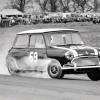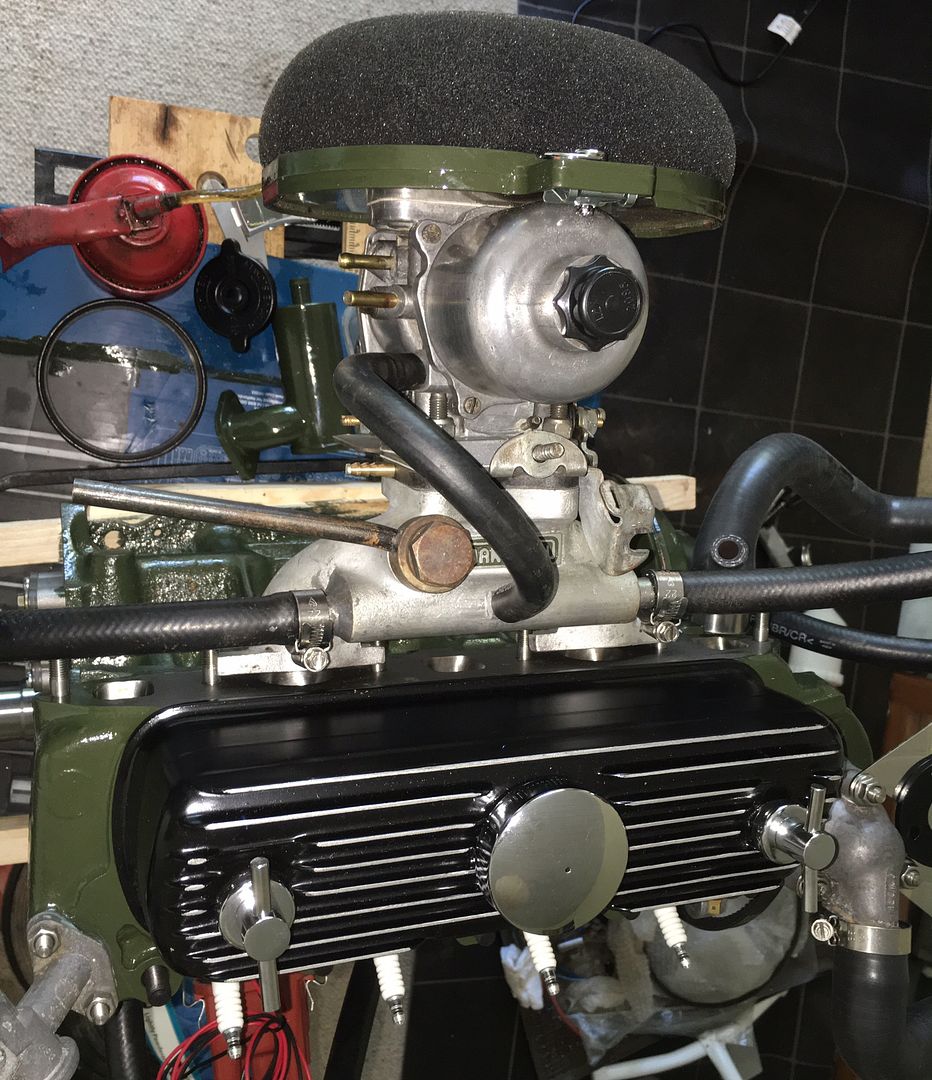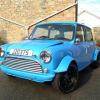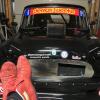The biggest thing I wanted to check was that I'd got the principle of the breather system right, and that it's going to do what it should be doing. I could never understand why the later system had that y-piece with different sized outlets and different sized hoses on either side of the engine.
The Y-piece oddly was never up-dated. It was originally contrived for Twin SUs, that have the CCV Ports and a single Oil Separator.
Now that is interesting, and it makes sense now. I couldn't for the life of me imagine why it would have been designed that way. Guess it must have been cheaper to manufacture the tapered hoses rather than redesign the plastic Y-piece!

1275 Breather System - Connecting To Carb

Best Answer driftz , 07 September 2016 - 01:29 PM
Iv done a very similar thing for the same reasons. No reason not to if your not using it for coolant
Go to the full post
#16

Posted 08 September 2016 - 10:17 AM
#17

Posted 08 September 2016 - 10:21 AM
Now that is interesting, and it makes sense now. I couldn't for the life of me imagine why it would have been designed that way. Guess it must have been cheaper to manufacture the tapered hoses rather than redesign the plastic Y-piece!
What is 'funny' is how they managed to waste zillions on making small and pointless changes throughout this cars (and no doubt others) production history yet something that cost them $0.041 AUD never got a look in,,,,,
No wonder they went broke,,,,,,,,
Edited by Moke Spider, 08 September 2016 - 10:23 AM.
#18

Posted 08 September 2016 - 10:36 AM
Air does enter via the oil filler cap. Letting clean air in allows the blow by fumes to be sucked out reducing oil contamination. It also helps oil drainage and regulates the crankcase pressure a bit, you only need 3-4psi under atmospheric.
#19

Posted 08 September 2016 - 11:07 AM
That's what I originally thought happened. Carb draws in air from the lower engine breathers, but doesn't need a pcv valve due to the location of the breather inlet on the HIF44, rather than a take off on the inlet manifold.. Any extra air that is needed to be drawn in then comes through the small vent in the rocker cover cap. Sound about right?
#20

Posted 27 October 2016 - 11:10 PM
Hi!
I'm (still) putting my engine together, although the end is in sight :)
I would just like to run this past your collective expertise just in case I'm making a glaring mistake in my breather system. I've done lots of searching of past topics, and haven't found anyone who has connected it like this, so just wanted to check there isn't a really obvious reason for that!
To try and cut down on pipework and keep the engine bay neat, I've been planning to connect both my timing cover and clutch housing breathers to the water heated inlet manifold, using it as a Y-piece. The neat-freak in me has always hated these being left unconnected to anything. I've tapped a hole in the centre (only into the water section), and added a nozzle, and connected it via a short pipe into the carb. Any obvious problems with doing this?
(I don't actually have any breathers on the engine yet, so you'll have to use some imagination for where the pipes connect to :)
Thanks!
Nice idea, something so simple and effective, IMO think this would look really nice with some stainless steel over-braid and Aeroquip end fittings, check out EBay.
eBay item number: 301887246038 (You can buy these in different sizes)
Edited by neal, 27 October 2016 - 11:25 PM.
#21

Posted 28 October 2016 - 12:46 AM
Maybe I've read it wrong, but sorry I don't understand. You said you plumbed the breathers "into the water section" of the heated manifold?!
#22

Posted 28 October 2016 - 12:37 PM
Maybe I've read it wrong, but sorry I don't understand. You said you plumbed the breathers "into the water section" of the heated manifold?!
Correct, he isn't connecting the manifold to the cooling system
it makes it abit neater
#23

Posted 28 October 2016 - 02:03 PM
Maybe I've read it wrong, but sorry I don't understand. You said you plumbed the breathers "into the water section" of the heated manifold?!
Correct, he isn't connecting the manifold to the cooling system
it makes it abit neater
Exactly. It's not a daily driver and is mostly used in fair weather, so have never needed to water heat the inlet. It's just using the pipe that goes through the casting for another use :)
The engine is still being assembled at the mo, but once I've got the clutch housing and breather on I can take a better photo. I'm quite pleased with how neatly it's turned out.
#24

Posted 28 October 2016 - 02:11 PM
Love this idea, good work Mr Jenkins!
#25

Posted 28 October 2016 - 02:37 PM
I hope you have used suitable hose. that will not be eaten by the oil/fuel vapour.
#26

Posted 28 October 2016 - 02:47 PM
I hope you have used suitable hose. that will not be eaten by the oil/fuel vapour.
Sure have, it's fuel & emissions hose from Minispares. Didn't fancy it turning to mush :)
#27

Posted 28 October 2016 - 04:13 PM
It's not a daily driver and is mostly used in fair weather, so have never needed to water heat the inlet.
That's a common misunderstanding of what the water heated manifolds are for.
It's got very little/nothing to do with cold weather running and is more about keeping fuel in vapour form as it runs through the inlet tract.
Edited by Icey, 28 October 2016 - 04:13 PM.
#28

Posted 28 October 2016 - 04:48 PM
It's not a daily driver and is mostly used in fair weather, so have never needed to water heat the inlet.
That's a common misunderstanding of what the water heated manifolds are for.
It's got very little/nothing to do with cold weather running and is more about keeping fuel in vapour form as it runs through the inlet tract.
Too much heat in the inlet tract robs power and too cold causes icing, your car will run just fine during the fair weather months as it is.
#29

Posted 28 October 2016 - 10:32 PM
Too much heat in the inlet tract robs power and too cold causes icing
You are quite correct but the water heated manifolds don't introduce too much heat. Vizard notes that for most engines the loss of power will be a near imperceptible 1hp. It's a worthy sacrifice for the improvements it provides in other areas.
It's a little tangential to the point but it's notable on engines with longer intake tracts (my LandRover is a good example) that heated manifolds provide much better economy figures because the improvement in atomisation counters the reduced charge density. The same problem is evident for fuel injection - wall wetting (X-Tau).
What I'm really getting at is that it's not always clear cut that hot intake == bad - like any analogue system, it's a balancing act.
#30

Posted 28 October 2016 - 10:56 PM
Good a voice that is aware of what is going on. There is a guy who, as he worked at Osselli and they brought out the heated manifold in 1978 insists it is to reduce carb icing. But yet there is still a isolation block between manifold and carb. Arrrrrrgh. Can't argue with tea makers.It's not a daily driver and is mostly used in fair weather, so have never needed to water heat the inlet.
That's a common misunderstanding of what the water heated manifolds are for.
It's got very little/nothing to do with cold weather running and is more about keeping fuel in vapour form as it runs through the inlet tract.
1 user(s) are reading this topic
0 members, 1 guests, 0 anonymous users




















